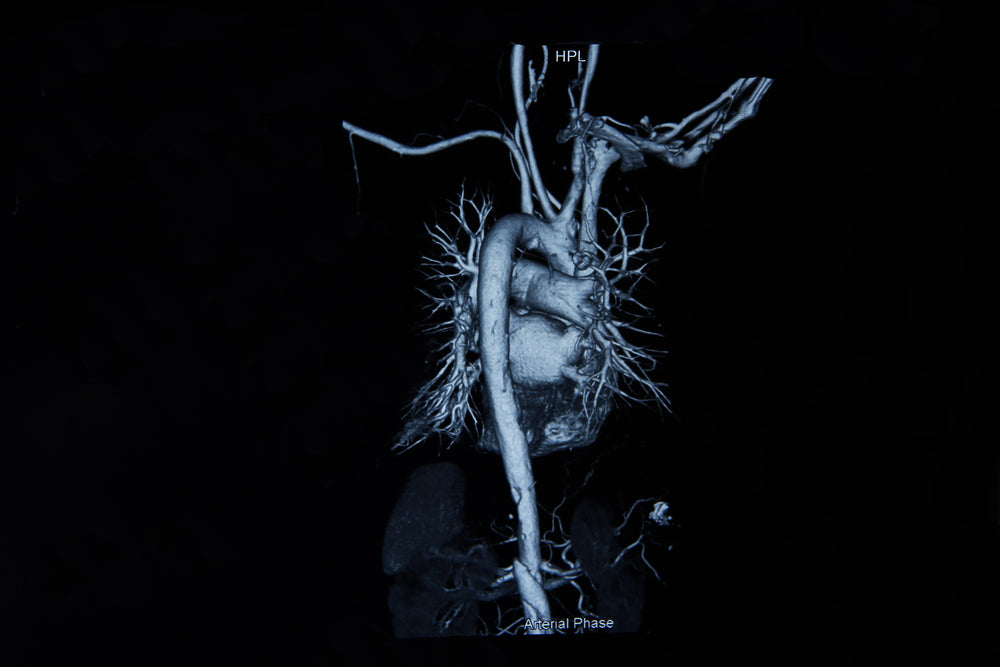CT Angiogram with Cleerly: The Future of Coronary Imaging
Introduction
In the evolving sphere of cardiovascular diagnostics, innovation is not just welcomed—it’s essential. Among the most groundbreaking advances is the integration of AI with coronary computed tomography angiography (CCTA), and at the forefront stands Cleerly. This blog delves into how Cleerly transforms a standard CT angiogram into a powerful, non-invasive diagnostic tool, enabling early detection of heart disease, nuanced risk assessment, and a personalized approach to prevention.
1. Understanding the Basics: What Is a CT Angiogram?
A CT angiography (CTA) is a non-invasive imaging technique employing intravenous contrast and high-speed CT scanning to capture high-resolution images of blood vessels—particularly coronary arteries in the context of heart health. Compared to traditional catheter-based angiography, CTA offers enhanced safety, reduced procedure time, and cost-effectiveness. The scan helps detect blockages, stenosis, and even subtle anomalies, often replacing invasive diagnostic procedures when appropriate.
CCTA focuses exclusively on the heart’s vessels, revealing the presence and severity of arterial plaque with precision. Modern CT scanners can execute these scans swiftly—often without the need for sedation, enabling outpatient procedures that are quick, accurate, and patient-friendly.
2. Introducing Cleerly: AI That Sees Beyond the Surface
While CCTA offers detailed anatomical imaging, it traditionally falls short in characterizing the type and risk profile of plaque. That’s where Cleerly transforms diagnostics:
-
Cleerly is a comprehensive AI-driven platform that enhances CCTA by identifying, characterizing, and quantifying coronary artery plaque—especially high-risk soft (non‑calcified or low‑attenuation) plaque.
-
Backed by FDA-cleared algorithms, Cleerly is built upon more than 10 million images from 40,000+ patients across 15 years of clinical research—including landmark trials.
-
The Cleerly ISCHEMIA module adds functional insight, predicting ischemia by estimating fractional flow reserve (FFR) non-invasively—aligning with the thresholds used in invasive FFR (≤0.80 vs. >0.80).
With Cleerly, physicians gain a precise, data‑driven roadmap of the coronary arteries—far beyond what traditional imaging or calcium scoring could ever achieve.
3. Clinical Impact: Better Detection, Better Decisions
3.1 Enhanced Detection of Obstructive Disease
In a comparative study, Cleerly’s AI-driven analysis outperformed myocardial perfusion imaging (MPI) in detecting obstructive and severe stenosis, as well as ischemia (via FFR). Specifically:
-
AUC for obstructive stenosis (≥50%) improved from 0.66 (MPI) to 0.88 (Cleerly).
-
AUC for severe stenosis (≥70%) rose from 0.81 to 0.92.
-
AUC for FFR‑defined ischemia (<0.80) surged from 0.71 to 0.90.
-
Among patients with negative MPI, Cleerly still detected obstructive stenosis in 54% and severe stenosis in 20%.
By integrating both MPI and Cleerly, sensitivity for serious stenosis reached 95%, reducing invasive angiography utilization by up to 49% in certain workflows.
3.2 Early Detection of Vulnerable Plaque
Unlike calcium scoring—which only reveals calcified, older plaque—Cleerly spots soft, unstable plaque that is far more prone to rupture and cause heart attacks. As noted, around 75% of heart attacks arise from less than 70% narrowing—a scenario often missed by standard stress tests.
3.3 Quantitative, Longitudinal Tracking
Cleerly generates robust, quantitative reports of plaque volume and distribution, enabling providers and patients to monitor progression—or regression—with lifestyle changes, medications, supplements, and other preventive strategies.
3.4 Non-Invasive Ischemia Prediction
With Cleerly ISCHEMIA, clinicians can non-invasively assess ischemic risk based on CCTA anatomy and AI—reducing dependence on time-consuming, invasive FFR tests and leveraging the newly established AMA Category I CPT® code 75580 for billing.
4. Why Clinicians Are Embracing Cleerly
A longtime cardiologist reflects:
"In my over 35 years of heart patient care … Coronary CT Angiography (CCTA) with AI interpretation (Cleerly Health) is the most important breakthrough for accurate diagnosis and disease tracking."
Compared to conventional imaging, Cleerly provides:
-
Greater diagnostic confidence
-
Non-invasive clarity on high-risk plaque
-
A preventive-focused paradigm
-
Better resource utilization in value-based care models
5. Who Benefits from a CT Angiogram with Cleerly Analysis?
Cleerly-enhanced CT angiograms could be especially beneficial for:
-
Patients at intermediate cardiovascular risk (family history, cholesterol, hypertension, metabolic syndrome)
-
Individuals experiencing chest discomfort or unexplained symptoms despite normal stress tests
-
Proactive individuals like athletes or executives seeking advanced cardiovascular screening
-
Those wanting to monitor treatment efficacy (e.g., with statins, supplements, lifestyle changes) over time
6. What to Expect: The Patient Journey
-
Referral & Imaging
Your physician orders a non-invasive CCTA, performed in an outpatient setting with IV contrast. The scan is fast, painless, and usually takes less than 30 minutes. -
AI Processing & Analysis
The images are uploaded to the Cleerly platform. AI algorithms quantify plaque, assess composition, gauge stenosis, and—if ISCHEMIA module is active—predict ischemia risk. -
Personalized Report & Consult
Within days, the referring provider receives an in-depth report. Plaque burden, risk stratification, and any ischemic findings are explained, alongside a tailored prevention or treatment plan. -
Long-Term Monitoring
Periodic follow-up CCTAs allow comparison and tracking of disease progression or regression over time.
7. Caveats & Considerations
-
Radiation & Contrast Risks: While radiation exposure is relatively low with modern CT protocols, it remains. Contrast reactions—though rare—should be discussed, especially in patients with kidney concerns.
-
Image Quality Matters: Accurate analysis requires high-quality CCTA images. A poor capture may compromise AI detection.
-
Microvascular or Spasm-Related Disease: Cleerly excels at detecting plaque-driven disease—but may not detect microvascular or vasospastic conditions.
8. The Broader Picture: Prevention and Value-Based Care
Cleerly aligns perfectly with modern medicine’s shift toward prevention and personalized care:
-
Detect disease before symptoms arise
-
Quantify what matters most—plaque quality and location—not just degree of stenosis
-
Support value-based models by reducing unnecessary invasive procedures and focusing on outcomes
-
Tailor interventions—from lifestyle to therapeutics—based on individualized risk assessments
9. Summary Table
| Feature | Traditional CCTA | CCTA with Cleerly |
|---|---|---|
| Plaque Detection | Yes | Yes — detailed type & burden |
| Vulnerable Plaque Identification | No | Yes (soft/low-attenuation) |
| Quantitative Analysis | No | Yes (volume, distribution) |
| Non‑invasive Ischemia Insight | No | Yes (Cleerly ISCHEMIA module) |
| Follow-up Tracking | Limited | Comprehensive tracking |
| Reduces Invasive Procedures | Partial | Significant reduction |
Call to Action: Take Charge of Your Heart
Heart disease doesn't have to be a future diagnosis. With Cleerly-enhanced CT angiography, you gain clarity—seeing not just blockages, but the composition, volume, and risk of the plaque—long before symptoms strike.
-
Talk with your provider about whether a CCTA with Cleerly fits your cardiovascular screening needs.
-
If eligible, request the Cleerly ISCHEMIA module for non-invasive ischemia assessment.
-
Use your results to craft a personalized prevention plan—complete with lifestyle tweaks, nutritional strategies, or medical therapies.
-
Track your progress with follow-up CCTAs to stay ahead of heart disease.
Prioritize prevention. Demand clarity. Choose Cleerly.
References
-
Comparative study: Cleerly AI vs. MPI for stenosis and ischemia detection (Revolution Health & Wellness, cleerlyhealth.com, cleerlyhealth.com, Wikipedia, The Imaging Wire, Forum Health).
-
Cleerly’s AI‑driven plaque characterization and quantification benefits (Longevity Personalized).
-
Cleerly ISCHEMIA, FDA clearance, and billing via CPT® code 75580 (cleerlyhealth.com).
-
Cleerly’s foundation: multi‑year, multi‑study AI validation (Business Wire, cleerlyhealth.com).
-
Clinician endorsement of Cleerly’s impact (kahnlongevitycenter.com).
-
Overview of CT angiography fundamentals, anatomy, and risks (Wikipedia).


